How to Plan Food for Your First Backpacking Trip
By Sara Woolcock, MS, RD, CD
Updated January 6, 2024
This post may contain affiliate links.

Where Do I Start?
Getting ready for your first backpacking trip? Whether you are doing a quick overnight or your first multi-day trip, meal planning for backpacking takes some practice, but it is a vital component of your pre-trip preparation.
Bringing foods that you love will make your trip more enjoyable, and it gives you the nutrition you need to hike from sunrise to sunset. Having too little food or food that you don’t like can make your trip miserable. At worst, it can even put you in some danger. However, packing way too much food adds excess weight to your pack. A heavy pack will slow you down and could ruin your trip.
While it can be hard to strike a sweet spot when you are setting out on your first backpacking trip, here are some suggestions for how to get started with meal planning. We’ll cover:
- How much food to pack
- Which foods work best for backpacking
- How to choose the right foods for YOU
- How to use your first backpacking trip to dial in your meal plan for future hikes

How Much Food Should I Bring?
The right amount of food to bring on your first backpacking trip will vary widely from hiker to hiker. It also depends on your trip.
Here are just a few of the factors that determine how much food you will need:
- Your age, gender, and body size. Larger, younger people generally need more calories.
- The length of your trip. Trips of higher mileage and more hiking days will require more food.
- The terrain you will be hiking & elevation. Difficult terrain and high elevation increase your calorie needs.
- The climate. Extreme climate conditions require extra nutrition since your body will work harder to maintain a comfortable temperature.
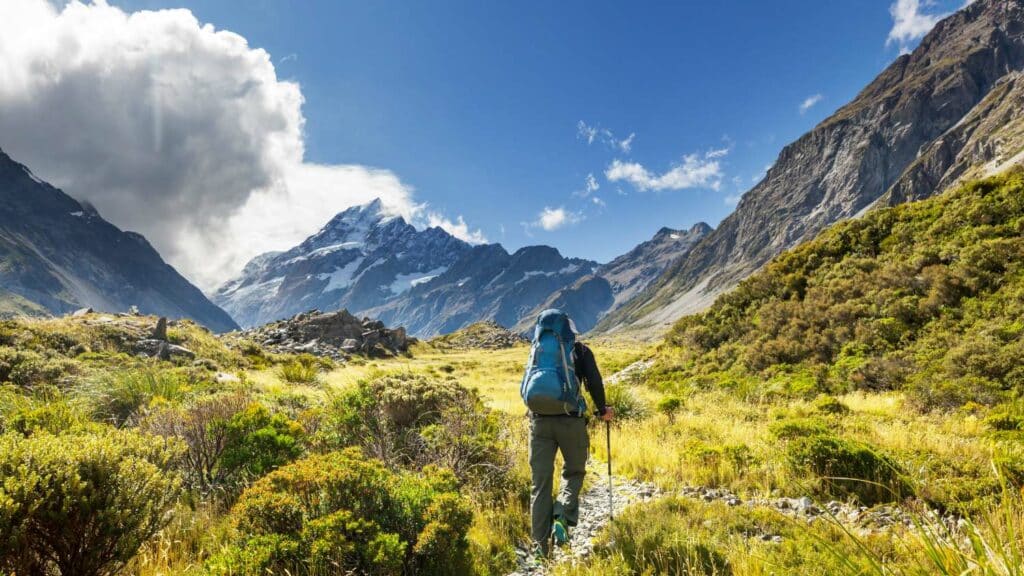
Debunking the 2 pounds of food per day “Golden Rule”
One piece of often-repeated advice is to pack at least 2 pounds (or 1 kilogram) of food per person per day; however, this “golden rule” is a one-size-fits-all approach. Not all backpacking food provides the same amount of nutrition for its weight. Some hikers end up packing too little nutrition in their 2 pounds of food, while others can get more than enough nutrition in less than 2 pounds. With careful meal planning, it is very reasonable to pack all the nutrients you need in less than 2 pounds of food per day. Click here to learn more.
So how much is enough?
When figuring out how much food you need, learning what you normally eat at home is a good place to start. Of course, you will probably need to eat much more on a backpacking trip, but a typical day’s worth of eating will give you a starting point.
The best way to find out what you eat on a typical day is to keep a simple food journal. You can write your foods down on paper or use one of the many tracking apps available. Additionally, an online calorie calculator will give you a rough estimate of how many calories your body requires on a normal day. When backpacking, you will likely need 1.5-2x the number of calories you need on a more sedentary day at home, depending on the difficulty of your hike.
When you pack for your first trip, bring a little more food than you think you will need. We recommend using a food journal during your trip, too. Record how much you ate, how you felt (too hungry? not enough energy?), and what did NOT get eaten. This will help you dial in your nutrition for future trips. The more you hike, the easier it will be to estimate how much food you’ll need for each type of trip.
Not to worry. We created a FREE resource to alleviate the anxiety of determining how much food to pack for your backpacking adventures.
Our one-of-a-kind Hiking Calorie Calculator considers the many variables that make determining calorie needs difficult.
Which Foods Should I Bring?
So now that you have a rough idea of how much nutrition you will need on your trip, which foods can you bring to meet those needs? There are a lot of foods that work well for backpacking, including many that you can easily find in the grocery store.
Ideally, you will be looking for backpacking food that is:
- Calorically-dense
- Full of a variety of nutrients
- Non-perishable (mostly)
- Lightweight
- Non-bulky, and
- Prepared easily with the backpacking cooking gear you have
Need some specifics? Get 100 of our favorite grocery store backpacking food ideas here.
Finding the right foods for YOU
When looking for foods to take on your first backpacking trip, consider the following points:
What foods do you normally like to eat every day?
When you are at home, do you like to have a coffee every morning? Look for coffee-based drink mixes, like this Pumpkin Spice Latte recipe that we created for Backpacker Magazine. Do you like a little dessert after your dinner at home? You can’t go wrong with Mixed Berry Crumble or Trailside Tiramisu.
Spending time in the backcountry doesn’t mean you have to “tough it out” and forgo your favorite foods. It is quite the opposite. Look for foods you normally enjoy and find less perishable versions to bring on your hiking trip.
What is your hiking style?
Your hiking style is how you like to spend your day in the backcountry. Try to tailor your food to suit your hiking style. Thinking back to recent day hikes, do you like to take frequent breaks to stop and snack? Or do you prefer to snack while you are on the go? Those who prefer the latter should prioritize convenient foods that can be eaten without much time and fuss. Alternatively, those who prefer to skip the snacks but stop to cook an elaborate lunch for a mid-day siesta might decide to bring completely different foods.

Pro Tips
Once you’ve identified which foods you like and what your hiking style is, you should easily be able to choose foods that fit. Follow these pro tips to avoid first-trip pitfalls!
Bring a variety of foods.
It’s very easy to get sick of food on a multi-day hike. So regardless of which foods you like and what your hiking style is, you’ll want to bring a variety of options. Mix up the flavors – sweet, salty, tangy, or spicy. Bring a few newer foods along with some reliable favorites you know you will enjoy.
It is wise to try out new potential backpacking foods at home or on day hikes. This way, you know for sure that your chosen backpacking foods will work for you.
Don’t skimp on snacks.
Don’t just think about breakfast, lunch, and dinner. Pack multiple snack options to have between meals while you are on the go. This may seem excessive for non-snackers, but eating nutrient-rich snacks throughout the day will help ensure that you get enough nutrition. Particularly if your hike is strenuous, you are unlikely to be able to eat enough if you limit your eating to 3 square meals. Snacks can include DIY trail mixes, no-bake energy bites, bars, chips, crackers, candy, cookies, dried fruit, and more. Read how we choose snacks and get ideas here: The Best Backpacking Foods for Energy.
Don’t forget beverages!
Don’t overlook beverages. Including beverages in your meal plan will not only help you to stay hydrated, but it can also add extra electrolytes and calories to your backcountry diet. A nutritious beverage can double as a delicious treat to look forward to on the trail. Try making a DIY drink mix, like our popular Chocolate Peanut Butter Shake. Read more about backpacking hydration here.
Consider water availability.
If water sources will be scarce, look for recipes that require less water to rehydrate fully. The Backcountry Foodies recipes are designed to use less water to rehydrate than most commercially prepared backpacking meals.
Bring enough fuel.
Consider how much fuel you will need to prepare your meals, and make sure to bring enough fuel. Choose a cooking style that minimizes fuel usage, and consider using a pot cozy to make your cooking more fuel-efficient. Check out this neat tool that allows you to always bring a full canister.
Choose meals that fit your timeline.
Some meals require a significant amount of time, whereas others are ready-to-eat. You will want to check the instructions on any backpacking meal to ensure that the time required fits your hiking style and preferences. Some meals might need to cook for 20 minutes, which won’t work well if you like to eat right away and get moving or go to bed.
Final Thoughts
The most important thing on your first trip is to have fun!! And remember that planning food for backpacking is a learning process. The more you go, the better you’ll know which foods will help you feel your best on the trail. If you’re stuck, reach out to us anytime. Best of luck!

ARE YOU FEELING COMPLETELY OVERWHELMED BY THE MEAL PLANNING PROCESS?
You’re not alone! Dialing in your nutrition for epic adventures can certainly feel overwhelming. Backcountry Foodie has two services designed to alleviate the stress and anxiety – Backpacking Meal Planner & Nutrition Coaching.
DISCLOSURE: Some of the links on this page are affiliate links, which means we may receive a modest commission if purchases are made through those links. This adds no cost to our readers and helps us keep our site running. Our reputation is our most important asset, so we only include links for products we use ourselves.
Are you new to our blog?
Check out these related posts:
- Best Backpacking Foods for Energy
- What to Eat & Drink After Hiking: Our 3 Favorite Tips
- How to Make a Quick & Easy Backpacking Meal Plan
- How to Choose Snacks for Your Hiking Adventures
ABOUT THE AUTHOR:

Sara Woolcock, MS, RD, CD is a Seattle-based registered dietitian, researcher, and thru-hiker. She has a Master’s degree in Public Health Nutrition from the University of Washington, and over 8 years of experience as a registered dietitian working with older adults. She is an avid runner and backpacker and completed thru-hikes of the Pacific Crest Trail in 2018 and the Colorado Trail in 2020. Her favorite trail snack is a Snickers bar.

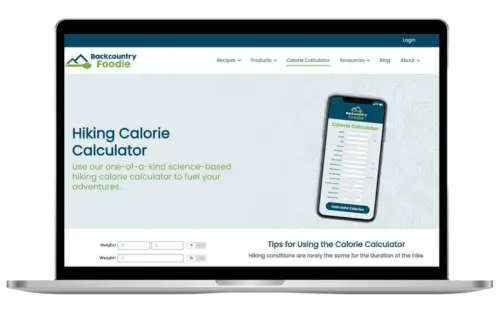

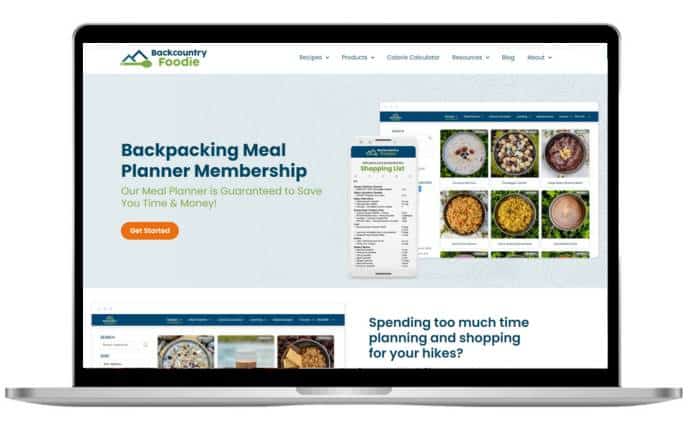
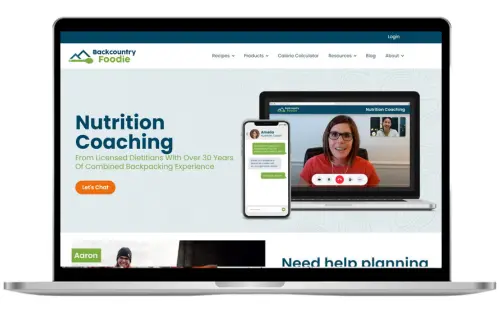
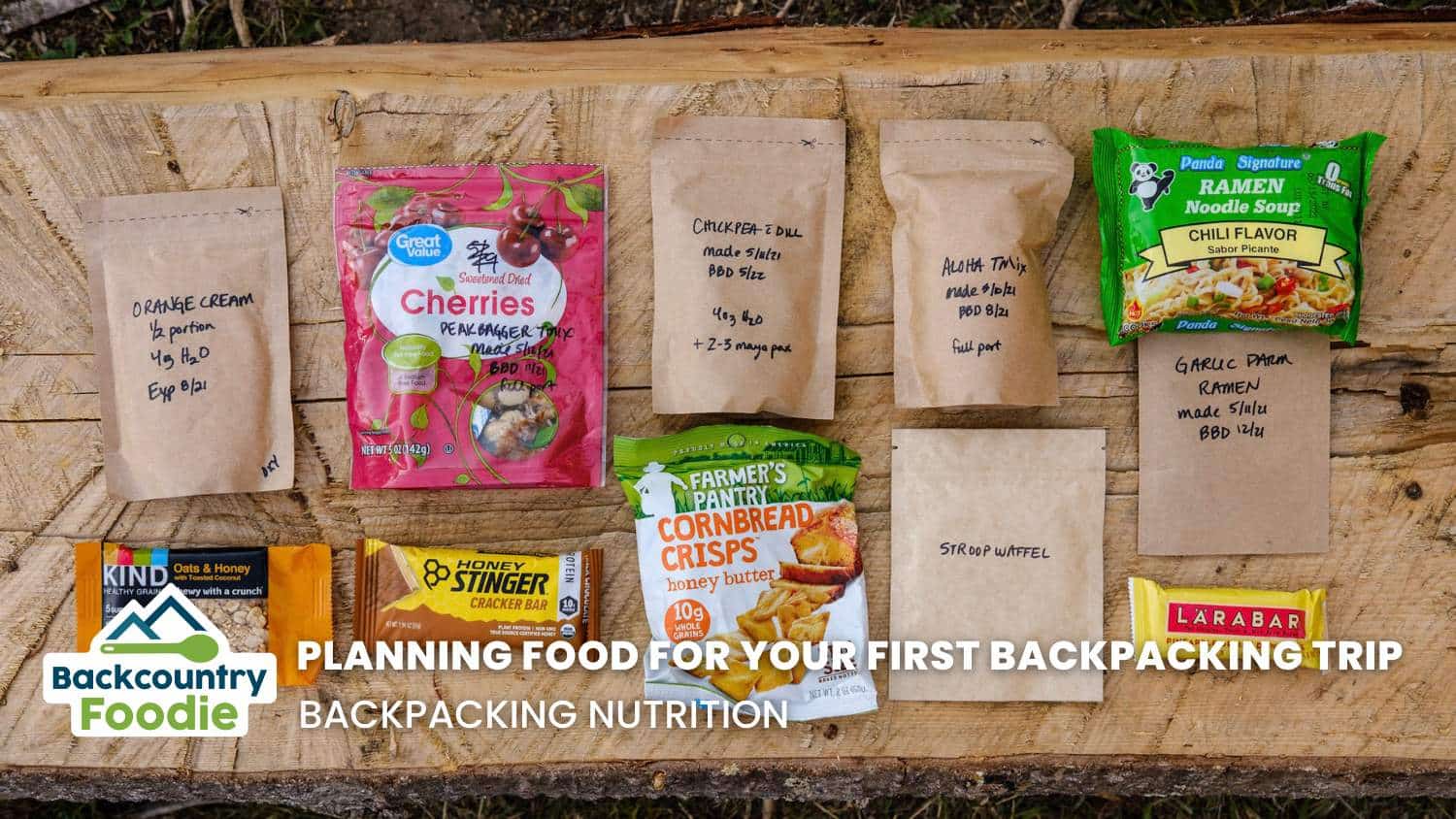
Leave a Reply